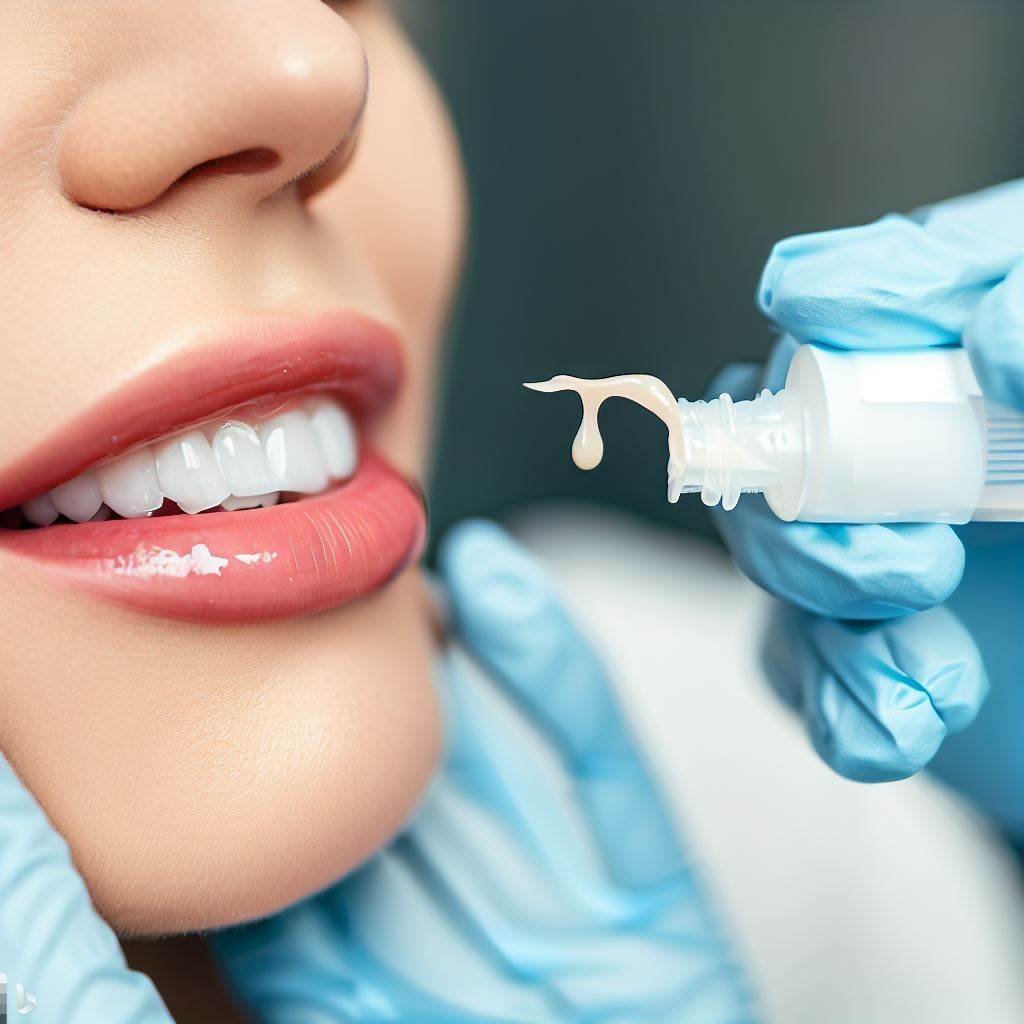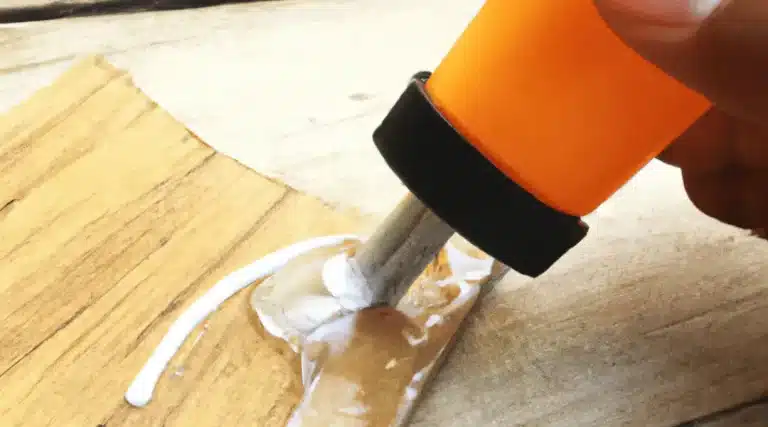Dental veneers have become one of the most popular cosmetic dental procedures in recent years. They offer a quick and effective solution for people who want to improve the appearance of their teeth. Veneers are thin shells that are placed over the front surface of the teeth to improve their color, shape, size, and alignment.
While dental veneers can dramatically improve the appearance of teeth, choosing the right glue to bond them to the teeth is critical to achieving long-lasting results. The preferred glue choices for dental veneer applications can vary depending on several factors, including the type of veneer, the condition of the teeth, and the patient’s oral health.
The two most commonly used glues for dental veneers are resin cement and glass ionomer cement. Each of these glues has its own unique advantages and disadvantages, and understanding the differences between them is essential for achieving the best results.
In this article, we will explore the factors to consider when choosing a glue for dental veneers, the application process, and aftercare and maintenance.
Overview of Dental Veneers

This section provides a comprehensive overview of the materials and techniques used in the application of thin, custom-made shells that are bonded to the front surface of teeth for cosmetic enhancement purposes. Dental veneers are a popular solution for those looking to improve the appearance of their teeth.
They are typically made from either porcelain or composite resin and offer a range of aesthetic benefits, including improved color, shape, and alignment. However, cost factors can vary depending on the type of material used and the complexity of the case.
When it comes to the bonding process, resin cement is the preferred choice due to its superior strength and durability. In the following section, we will explore the different types of resin cement and their specific applications in dental veneer procedures.
Resin Cement
Resin cement is a commonly used adhesive in dental veneer applications due to its notable strength and durability.
This type of cement provides a strong bond that can withstand the daily wear and tear of the mouth, ensuring veneers remain in place for years to come.
Its bonding ability is also exceptional, making it an ideal choice for veneers that require a secure and long-lasting hold.
Strength and Durability
The ability of the adhesive to withstand external forces and maintain bond strength over time is a critical factor to consider in selecting an appropriate bonding agent for the attachment of dental veneers. Adhesive composition plays a crucial role in determining the strength and durability of the bond. Factors such as filler content, resin matrix, and initiator system all contribute to the adhesive’s ability to withstand stress and maintain bond strength.
In addition, microleakage, which is the penetration of fluids and debris into the interface between the tooth and the veneer, can compromise the bond over time. Therefore, it is essential to choose an adhesive that minimizes microleakage and provides a long-lasting, strong bond.
When selecting an adhesive, it is also important to consider the curing mechanism and the curing time, as these can impact the strength and durability of the bond.
In summary, understanding the strength and durability of an adhesive is crucial for successful dental veneer applications. In the next section, we will discuss the importance of bonding ability in selecting an appropriate adhesive.
Bonding Ability
The bonding ability of an adhesive is a critical factor to consider when selecting a suitable bonding agent for attaching dental veneers, as it directly impacts the success of the bond and the longevity of the restoration.
The bonding techniques used in dental veneer applications vary, and the adhesive selection must be appropriate for the technique used. The bond strength and durability of the adhesive are influenced by factors such as the adhesive material, surface preparation, and curing conditions.
The adhesive should provide a strong bond between the veneer and the tooth structure to prevent debonding or failure of the restoration. The adhesive should also have good wetting and spreading properties to ensure a uniform bond line thickness and eliminate any voids or bubbles.
To achieve a successful bond, the adhesive must be compatible with the veneer material, tooth structure, and other materials used in the restoration. The bonding ability of the adhesive should be considered in conjunction with other factors such as ease of use, handling properties, and cost.
Understanding the bonding ability of an adhesive is crucial for achieving a successful and long-lasting dental veneer restoration. In the subsequent section, we will discuss commonly used adhesive types in dental veneer applications.
Commonly Used Adhesive
Adhesive selection is a crucial factor to consider in ensuring the success and longevity of dental veneer restorations, and understanding commonly used adhesives can aid in making informed decisions.
There are several common adhesive types used for dental veneer applications, including etch-and-rinse, self-etch, and universal adhesives.
Etch-and-rinse adhesives are the most commonly used and rely on a separate etching step to create micromechanical retention on the tooth surface.
Self-etch adhesives combine the etching and bonding steps into one, simplifying the adhesive process.
Universal adhesives can be used in both etch-and-rinse and self-etch modes, providing versatility in clinical practice.
Adhesive properties, such as bond strength, marginal integrity, and hydrophilicity, should also be considered when selecting an adhesive.
Understanding the properties and characteristics of commonly used adhesives can aid in selecting the most appropriate adhesive for each clinical situation, ultimately leading to successful and long-lasting veneer restorations.
Glass ionomer cement is another commonly used adhesive in dental veneer applications, offering unique properties and advantages over other adhesive types.
Glass Ionomer Cement
Glass ionomer cement is frequently likened to a chameleon due to its ability to blend well with the surrounding tooth structure. Its chemical composition includes a powder made of calcium alumino-silicate and a liquid made of polyacrylic acid. Setting time can vary depending on the product, but typically ranges from two to six minutes.
One of the biggest advantages of glass ionomer cement is its ability to release fluoride, which helps prevent decay. However, it is not as strong as resin-based adhesives and can be more prone to fracture and wear over time. Despite its disadvantages, it is still a popular choice for certain veneer applications.
The next section will explore the differences between resin and glass ionomer cement.
Differences between Resin and Glass Ionomer Cement
Glass ionomer cement was discussed in the previous subtopic as one of the preferred adhesive choices for dental veneer applications. However, resin is another type of adhesive commonly used in these procedures.
When comparing resin versus glass ionomer cement, there are notable differences to consider. Resin is a stronger adhesive compared to glass ionomer cement, providing a more secure bond between the veneer and tooth. On the other hand, glass ionomer cement is more forgiving when it comes to moisture and can be used in situations where moisture control is a challenge.
When considering adhesive selection for dental veneer applications, it is essential to weigh the pros and cons of each type of adhesive carefully. To evoke an emotional response in the audience, it is crucial to understand that the choice of adhesive can significantly impact the outcome of a dental veneer procedure, affecting not only the patient’s appearance but also their self-confidence.
Ultimately, choosing the right adhesive is a crucial step towards achieving the desired outcome, and it is important to consider various factors before making a final decision. The subsequent section will discuss the factors to consider when choosing a glue for dental veneer applications.
Factors to Consider When Choosing a Glue
When selecting an appropriate adhesive for attaching dental veneers, there are several crucial factors that must be taken into consideration to ensure a successful outcome.
One of the most important factors is the type of adhesive used, as different types of adhesives have varying degrees of strength and compatibility with different materials.
Another important factor to consider is the compatibility between the adhesive and the tooth structure, as well as the veneer material.
Other factors to consider include the presence of any underlying tooth decay, the amount of tooth preparation required, and the overall health of the patient’s oral cavity.
By taking these factors into account, dental professionals can choose the most appropriate adhesive for each individual patient and achieve the best possible results.
Moving on to the application process, it is important to note that proper technique and attention to detail are crucial in ensuring the longevity and effectiveness of the adhesive bond.
The Application Process
The process of applying dental veneers involves several key steps. The preparation of teeth involves removing a small amount of enamel to ensure a proper fit and adhesion of the veneers.
Adhesive application is a critical step, as the right type and amount of adhesive must be used to ensure a strong bond between the veneer and the tooth.
Finally, the veneers are carefully placed onto the teeth and adjusted for proper fit and alignment. Each of these steps is crucial to achieving a successful and long-lasting result.
Preparation of Teeth
In the process of preparing teeth for veneer application, certain steps must be taken to ensure proper adhesion and longevity of the veneers. Tooth preparation is a vital aspect of this process. It involves a careful assessment of the tooth’s existing structure, followed by the removal of any damaged or decayed portions. Additionally, enamel reduction is done to improve the bonding surface of the tooth. This process is done in a controlled manner to ensure that the tooth’s integrity is not compromised.
After preparation, the tooth is thoroughly cleaned to eliminate any debris that may interfere with the bonding process. A trial placement of the veneers is then done to ensure that the fit and appearance are satisfactory. Finally, the tooth is etched with an acid solution to create a rough surface that enhances the bond between the tooth and the adhesive.
With tooth preparation complete, the next step is adhesive application, which involves the careful selection of the appropriate adhesive and a meticulous application process.
Adhesive Application
Achieving a strong and lasting bond between the tooth and veneer is crucial, and thus, meticulous selection and application of the adhesive is imperative, as even the slightest error can compromise the entire process, potentially resulting in disastrous consequences.
Adhesive types and bonding techniques play a significant role in ensuring the success of the veneer application process. Adhesive types can range from resin-based, glass ionomer, or hybrid materials, each with their unique properties that may require different application techniques.
Bonding techniques involve etching the tooth surface to create micro-retentions that allow for better adhesion, followed by the application of the adhesive, and curing with a curing light. The application of the adhesive should be done in thin, even layers to prevent air bubbles, which can weaken the bond.
The use of rubber dam isolation during the application process also helps to prevent contamination of the bonding surface. Once the adhesive is applied, the veneer can be placed onto the tooth surface and secured in place.
The next step involves the placement of veneers.
Placement of Veneers
Mastering the art of precise veneer placement is paramount for achieving flawless results, as even the slightest deviation from the optimal placement can lead to significant functional and aesthetic complications.
There are several veneer placement techniques available, including direct or indirect bonding and adhesive or resin cementation.
To avoid common mistakes during veneer placement, it is essential to communicate effectively with patients and ensure they understand the procedure, including the preparation process and what to expect during and after the procedure.
Common mistakes to avoid include incorrect tooth preparation, inadequate removal of excess cement, and poor bonding between the veneer and tooth.
Proper communication with patients during veneer placement can help to prevent these mistakes and ensure optimal placement.
Aftercare and maintenance are crucial to the longevity of veneers and will be discussed in the next section.
Aftercare and Maintenance
The proper maintenance of dental veneers is crucial for their longevity and involves regular check-ups with a dental professional, avoiding hard or chewy foods, and practicing good oral hygiene habits.
Post procedure care and cleaning techniques are essential to ensure that the veneers remain in good condition. Patients should avoid using abrasive toothpaste or brushing too hard, as this can damage the veneers.
Potential complications, such as chipping or cracking, can occur if the veneers are not properly cared for. It is also important to note that veneers are not a permanent solution and will eventually need to be replaced.
However, with proper care and maintenance, veneers can last for many years, providing patients with a beautiful, natural-looking smile.
Conclusion
In conclusion, choosing the right glue for dental veneer application is critical to ensure the success and longevity of the procedure. Resin cement and glass ionomer cement are the two most commonly used glues in the market, each with its unique advantages and disadvantages. While resin cement is preferred for its strength and durability, glass ionomer cement is ideal for its fluoride-releasing properties and easy application process. Factors to consider when choosing a glue include the patient’s oral health, aesthetic needs, and personal preferences.
The application process of dental veneers requires precision and attention to detail to achieve the desired results. The dentist must ensure that the veneer fits perfectly and that the glue is applied evenly to prevent any air bubbles or gaps. Aftercare and maintenance are also crucial to maintaining the longevity of the veneers. The patient should avoid eating hard or sticky foods and practice good oral hygiene habits, including regular brushing and flossing.
Regular checkups with the dentist can help identify any issues early and prevent any complications. In summary, choosing the right glue and following proper aftercare instructions can help ensure that dental veneers remain a successful and beneficial cosmetic dental procedure for patients.





